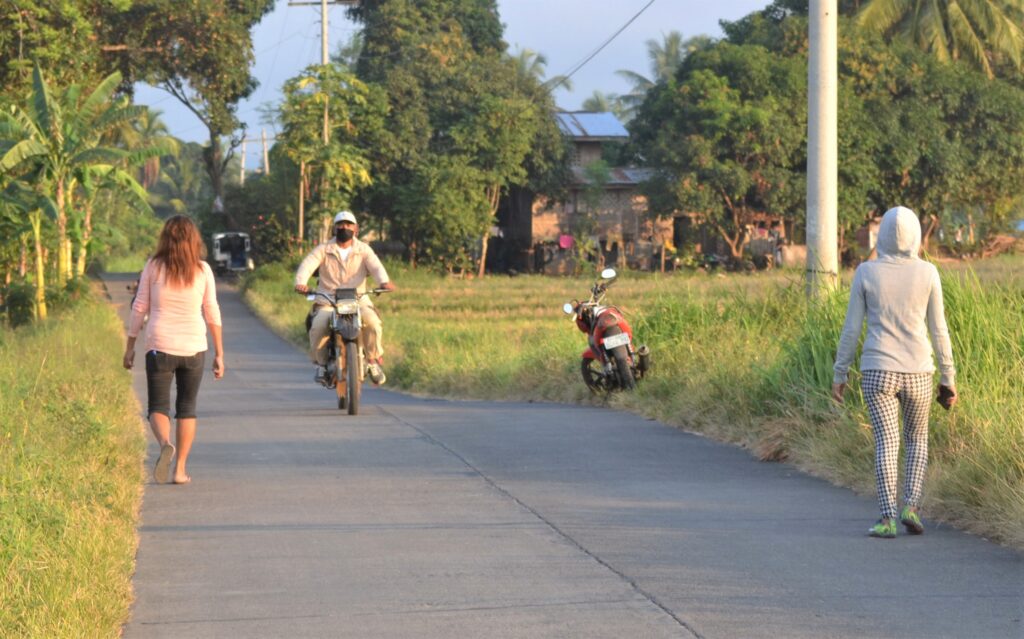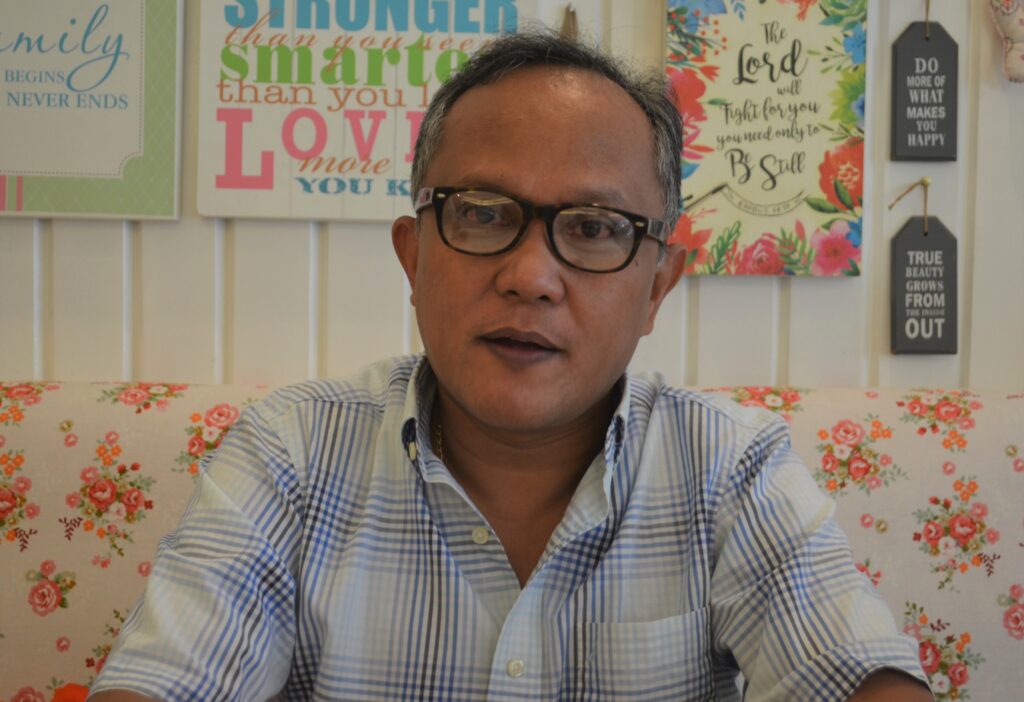Text and Photos by Henrylito D. Tacio
As more Filipinos are living longer these days, the population of the elderly – those aged 70 and over – are expected to increase, too. From 2.8 million in 2013, the figure is expected to grow to 13.4 million by 2050.
“From these numbers, it has been projected that the number of Filipinos at high risk for osteoporosis will reach 10.2 million by 2050,” reports the Philippine chapter of the International Osteoporosis Foundation (IOF).
Osteoporosis comes from the two Greek words, ostoun meaning “bone” and poros meaning “pore.” Literally, osteoporosis means “brittle” or “porous bones.” As such, it is a disorder where the bones in the body become weak and porous. It is an unnoticeable disease among older folks; in fact, aging automatically means having osteoporosis.
“A condition that is degenerative by nature.” That is how Dr. Alex N. Carpio, who practices orthopedic surgery and joint replacement and adult reconstruction at the Davao Medical School Foundation Hospital, describes osteoporosis.
“It progresses as time goes by,” he explains. “The older you become; the probability becomes higher.”
Unfortunately, most Filipinos are not paying attention to it. While they’re overly concerned with their heart, brain and kidneys, they don’t pay much attention to their bones. They take care of their bones only when they get a fracture or when they feel weak and frail because of poor bone health.
Dr. Carpio, who is a fellow of the Philippine Orthopedic Association and Philippine Hip and Knee Society, thinks bone problems should be at par with cardiovascular diseases, mental health, and infectious diseases. “Any illness that takes away the joy of living should be prioritized,” he points out.
Osteoporosis, along with osteoarthritis, are the two most common health problems when it comes to bones. Osteoporosis is called a silent disease partly “because of the nature of the disease and the fact that it develops or progresses without the patient knowing,” Dr. Carpio says.
People with osteoporosis should not take the disease for granted “because of the pain that comes with it,” Dr. Carpio says. “It can be quite debilitating at times to a point the activities of daily living are already affected.”
Many patients discover the condition only after they have had a fracture. A survey carried out by the Philippine Orthopedic Center some years back showed that 62.9% of the patients aged 50 and over who had been admitted for fractures were affected by osteoporosis.
More common in women
For every three Filipino women, one is most likely to suffer from osteoporosis. Among Filipino men, it’s one for every five males. That’s according to the National Nutrition and Health Survey, which used the Osteoporosis Assessment Tool for Asians (OSTA), a fairly sensitive screening tool for osteoporosis.
“The decline in bone mass usually happens beyond the age of menopause (aged 50 years and above) for women, while in men, the decline starts later,” wrote Irish Kate del Rosario in an article.
“Some people don’t realize that our bones, too, undergo similar metabolic processes as other organs do,” Del Rosario wrote. “While this may be a hit hard to buy, doctors maintain that bone tissues continuously go through the process called remodeling in which they have to be built up and broken down in a simultaneous manner.”
This is the reason why Dr. Willie T. Ong, in his book, How to Live Longer, suggested: “To have strong bones, you need to store calcium in your bones at a young age. The build-up occurs early in life and peaks at age 30. After this, there’s more bone breakdown than build-up, hence our bones become thinner.”
Young people are not spared
While osteoporosis is often thought of as a disease of the older people, it can strike at any age. In fact, children are not spared from osteoporosis. “(It) can also occur during childhood,” says the Lucile Packard Foundation for Children’s Health. “The average age of onset is between 8 and 14 years, but it can occur in younger children during growth spurts.”
Some people are more at risk of osteoporosis than others. “There are certain established risk factors that put an individual at higher risk for osteoporosis compared to the general population,” says Dr. Julie Li-Yu of the Osteoporosis Society of the Philippines Foundation, Inc. (OSPFI). “These factors include low body weight, sedentary lifestyle, menopausal status, history of fractures after age 45 years, family history of fracture, and advanced age.”
Other risk factors include “current cigarette smoking status, alcohol intake of more than 2 units per day, inflammatory arthritis, glucocorticoid use, and some other medical conditions that lead to secondary bone loss.”
Prevention tips
Until now, there is still no cure for osteoporosis, but it can be prevented. One of the best ways to prevent it is to be aware of what osteoporosis is, what your predispositions are and how to handle your predispositions. In doing so, the risk of fracturing bones is reduced.
A diet rich in calcium – along with vitamin D, which helps the small intestine absorb this vital element – is crucial to the prevention of osteoporosis. “Aside from ensuring optimal absorption of calcium, vitamin D also stabilizes nerves that keep reflexes intact, which helps a person maintain balance and prevent falls that can lead to fractures,” says Professor Leilani B. Mercado-Asis, of the Osteoporosis Society of the Philippines.
Studies indicate that calcium combined with vitamin D supplementation can reduce the risk of fracture in men and women over the age of 65. Other studies also show that calcium plus vitamin D increases muscle strength and reduces the frequency of falls among the elderly.
Nutritionists say the food sources rich in calcium are milk, cheese, egg yolks, salmon and tuna. Vitamin D can be obtained by spending time under the midday sun for about 10-15 minutes.
If you drink, limit your alcohol intake. Alcoholic drinks interfere with the absorption and use of calcium and vitamin D and other bone nutrients. “Drink only in moderation – no more than one or two drinks per day for men, and more than one drink per day for women,” suggests Dr. Kenneth Cooper, author of Preventing Osteoporosis.
Moderate also your intake of caffeine, which are found in coffee, tea and cola drinks. Studies show that drinking more than three cups of coffee every day may be harmful to bone health. If you enjoy drinking coffee and tea, you can help to make up for any calcium loss by getting enough calcium to meet your body’s needs.
Eating salty food must also be cut down. “The more sodium in your diet, the more sodium you excrete – and the more sodium you excrete, the more calcium you excrete,” explains Dr. Morris Notelovitz, author of Stand Tall! The Informed Woman’s Guide to Preventing Osteoporosis. “What probably happens is that as calcium is being excreted in the urine, the blood levels of calcium drop, causing the release of parathyroid hormone, which breaks down bone to restore calcium levels.”
Another preventive factor: exercise. “Regular exercise helps prevent osteoporosis, stimulating bones to thicken,” wrote Per Ola and Emily D’Aulaire in an article published in Reader’s Digest. “When muscles attached to it strain and contract, a bone responds by building denser tissue. But if the muscle is underused, the bone disassembles itself.”
To increase bone mass, doctors recommend activities such as walking, running, tennis, dancing, and low-impact aerobics. “Exercise,” says Dr. Barbara Drinkwater, a research psychologist at Pacific Medical Center in Seattle, “may help delay osteoporosis fractures by ten to 15 years.”
Finally, watch out what medicines you are taking. Some drugs can hasten bone loss, says Dr. B. Lawrence Riggs, a professor of medical research at the Mayo Clinic. Those most likely to cause problems are as follows: corticosteroids, rheumatic disorders, allergic conditions and respiratory disease; L-thyroxine, a thyroid medication; and furosemide, a diuretic often used against fluid retention associated with high blood pressure and kidney problems.
“Talk with your doctor about this possible side effect,” Dr. Riggs suggests. “If you have other risk factors as well, your doctor may want to check your bone density and, if it’s low, alter the dosage or stop the drug entirely.” – ###
Sources:
del Rosario, Irish Kate (2012). “Building a healthy bone structure,” Health and Fitness, p. 5.
Prevention Editors (1991). The Doctors Book of Home Remedies. Rodale Press, U.S.A.










